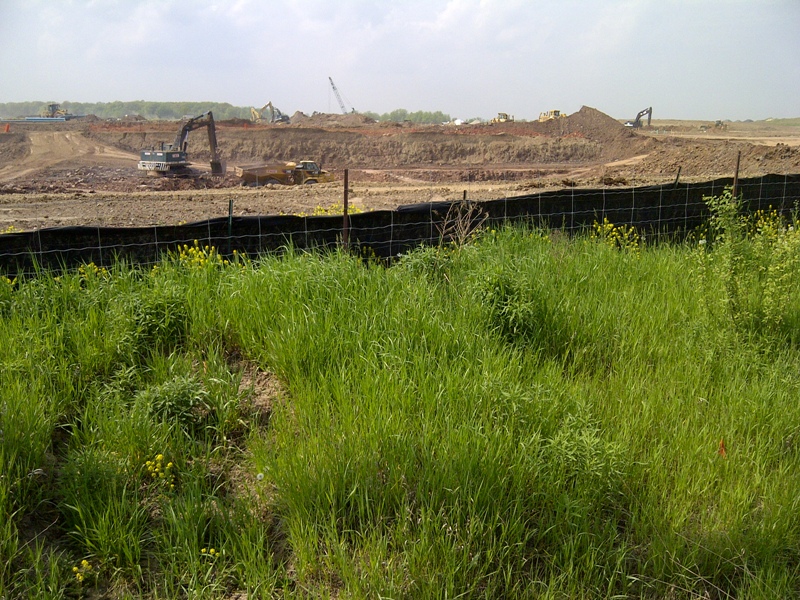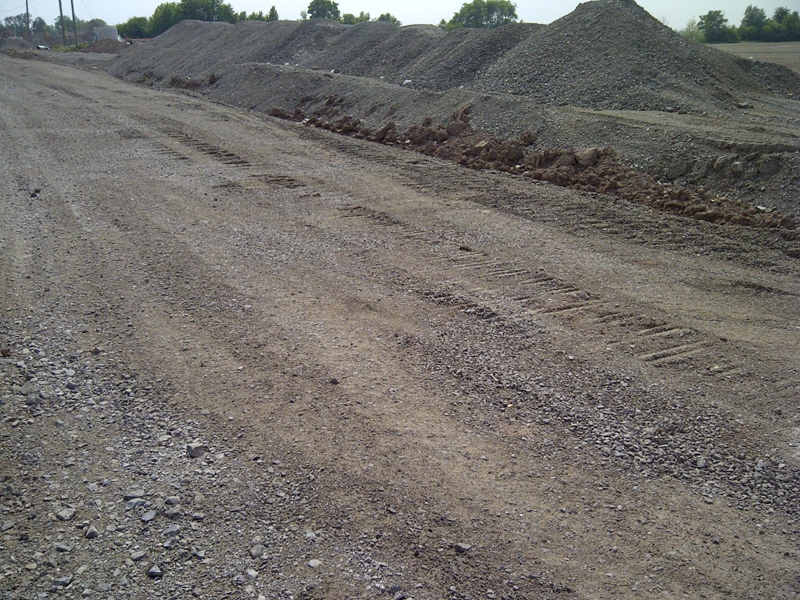I have been thinking about dirt lately. Because if you drive near my house you will see a lot of it. Just north of our neighbourhood, underneath huge dump trucks and excavators, there are acres of dusty brown earth. For weeks the earth has lain bare in preparation for the streets, and houses, driveways and parks that will soon be built.
 Every time I pass by, I ache for that tract of land. All the green pasture has been stripped away, the few old houses demolished, the fences ripped out of their holes. There are no more trees, no more dandelions, no more cows grazing on sunny afternoons. It is a stark landscape, where that ocean of soil and millions of microorganisms have suddenly lost their cover. It feels vulnerable and exposed.
Every time I pass by, I ache for that tract of land. All the green pasture has been stripped away, the few old houses demolished, the fences ripped out of their holes. There are no more trees, no more dandelions, no more cows grazing on sunny afternoons. It is a stark landscape, where that ocean of soil and millions of microorganisms have suddenly lost their cover. It feels vulnerable and exposed.
Perhaps I ache for that land because it resonates with my own experience. I know what it is to be laid bare by grief. I know what it is to be embarrassed by the limitations of my body. I know what it is to be weak, and what it is to feel completely defeated. There have been times when I felt just like that barren landscape.

But then a few weeks ago in the New York Times I read an article called, “The Hidden World Under Our Feet.” The ground under our feet is apparently one of our largest reservoirs of biodiversity. Amazingly, “A teaspoon of soil may have billions of microbes divided among 5,000 different types [including] thousands of species of fungi and protozoa, nematodes, mites and a couple of termite species.”
That changed the way I saw the ugly expanse of brown clay. I realized that it’s not dead, even though that’s how it looks to me. In it is the foundation for new life and new neighbourhoods. Soon there will be green grass, new trees and parks full of children playing. People will be planting gardens in their backyards and families will be out riding their bikes. In the winter, windows will have a warm glow in the evening as families gather for supper and Christmas lights will twinkle along snowy streets.

There are endless debates about urban sprawl, of course, and I am always disappointed to see farms disappear to make way for yet another subdivision. Still, what’s happening in my neighbourhood reminded me about something important: times of vulnerability and suffering are lousy, but not hopeless. Often–like those brown fields–they open the way for transformation and new life.
When we let our guard down, relationships deepen. When we are wounded, we can discover healing. When we suffer, we are given the opportunity to receive kindness and care. Even when we are at our worst, there are seeds of new life all around us, even if it’s hard to see them at first.
The idea that even the deepest darkness can give way to light is not exactly a new idea. It’s something that I learned from the life and death of Jesus. But I am grateful for the building site that reminded me again. It’s easy for a pastor and her funeral director husband to forget. Heck, it’s easy for all of us to forget.
So here’s to dirt. It’s not just a reservoir of biodiversity; it’s a reservoir of hope, too.

